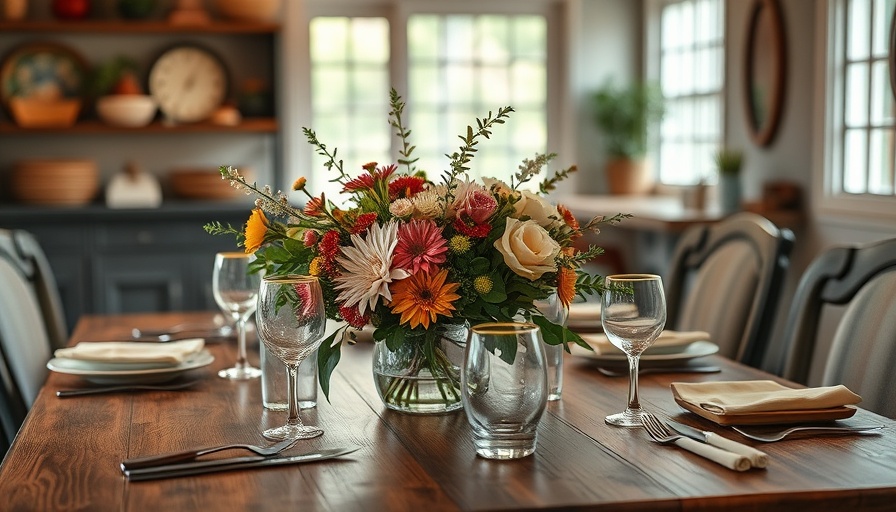
What Designers Really Notice: The First Impressions Matter
When it comes to design, first impressions count more than you'd think. Designers, with their keen observational skills, often pick up on subtle cues that shape the aesthetic and emotional impact of a space. Whether it's the color of the walls or the arrangement of furniture, every detail matters. So, what exactly do designers notice when they walk into a room? Here are seven critical elements that catch their attention immediately and set the tone for the whole environment.
The Color Palette: Setting the Mood
The first thing that stands out to a designer is often the color scheme. Colors evoke emotions and can create an atmosphere of calm or vibrancy. Designers assess how the colors complement each other and reflect the purpose of the space. For example, a soothing palette of blues and greens may create a relaxing retreat, while bold reds and yellows could energize a gathering place. Knowing this can help homeowners choose hues that achieve their desired vibe.
Lighting: The Unsung Hero
Good lighting can elevate any space, yet it can be a forgotten element. Designers typically notice the quality, type, and placement of light fixtures right away. Natural light is a favorite, as it can change throughout the day to add warmth and depth to any room. Task lighting, accent lighting, and ambient lighting also play pivotal roles in highlighting design features. Thinking about how light interacts with surfaces and colors can radically change how a space feels.
Furniture Layout: The Flow of Movement
Furniture arrangement impacts both functionality and flow within a space. Designers evaluate whether the layout facilitates ease of movement and whether it encourages conversation. A well-laid-out room allows people to navigate freely without obstruction, making it more welcoming. On the flip side, cluttered or awkwardly positioned furniture can make a gorgeous room feel chaotic. Rethinking your layout might just change how you—and your guests—experience the space.
Textures and Materials: Creating Depth
Textural diversity adds interest to any room, making it more inviting and tactile. Designers often take note of the materials present—from plush fabrics to sleek metals. Mixing materials like wood, glass, or stone can create a rich layer of depth that keeps the eyes moving within the space. Think of how comfortable a room feels; a combination of soft textiles, reflective surfaces, and natural elements can make all the difference.
Personal Touches: Reflecting the Homeowner's Personality
Designers immediately scan for elements that tell a story about the homeowner. Are there family photos on the walls? Unique art pieces? A well-placed trinket that sparks joy? These personal touches not only add warmth but create a connection to the inhabitants. They tell a story and can make a house feel like a home. So, don't be afraid to display items that resonate with your life journey; designers see value in your narrative.
Functionality: Practicality Meets Aesthetics
Design is not just about looks; it’s also about how well a space functions. Designers assess whether the elements of the room serve practical purposes. For instance, is there adequate storage? Are communal areas comfortable for gatherings? Visually stunning rooms can fall flat if they lack essential functionality. Balancing beauty with practicality ensures that design positively impacts daily living.
The Sound of Silence: Acoustic Considerations
While it might not be the first thing that strikes you, acoustics can significantly affect how a space is perceived. Designers often observe how noise travels within a room. Soft materials can absorb sound, creating a peaceful atmosphere, while hard surfaces can amplify it. Thoughtful design considers the auditory experience, ensuring that rooms aren’t just visually pleasing but also soothing to our ears.
By knowing what designers prioritize upon entering a room, homeowners can make informed choices to enhance their spaces. Whether you're embarking on a full renovation or just looking to refresh your interiors, keeping these seven elements in mind can make a world of difference.
Final Thoughts: Elevate Your Space with Designer Insights
Understanding the intricacies of interior design not only enhances the aesthetic appeal of a room but also transforms its functionality and emotional impact. Elevate your space by incorporating these insights and creating an environment that feels authentic to you. Now, when you step into your room, see it through the eyes of a designer and be inspired to make it your own!
 Add Row
Add Row  Add
Add 



 Add Row
Add Row  Add
Add 


Write A Comment